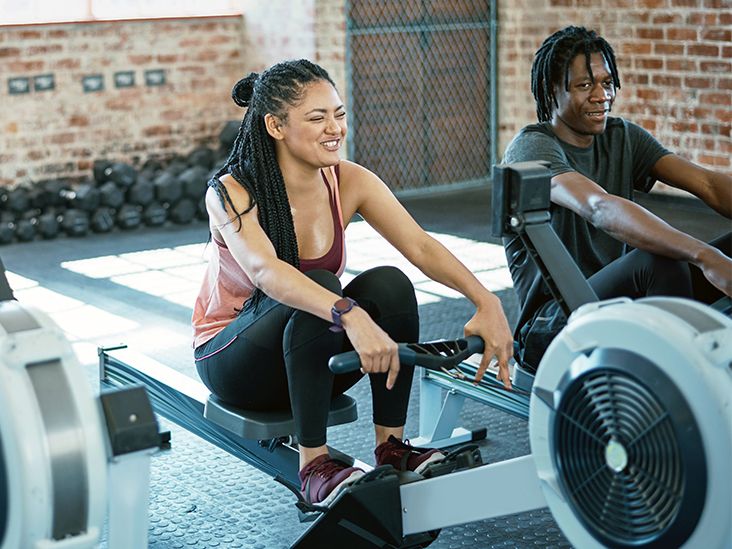Trying the rowing machine for the first time? You’re not alone. Many people are curious about it, but they worry about doing it wrong—especially about hurting their back. The good news is, rowing is one of the best full-body workouts you can do. It’s low-impact and burns a lot of calories. But if you don’t use proper form, your lower back might not be happy.
Let’s break it all down in a simple way. No fancy words. Just a guide to help you row safely and get stronger without soreness.
Why Choose the Rowing Machine?
Rowing gives you a cardio workout that also builds strength. It uses your legs, arms, back, and core. That’s why athletes and fitness trainers love it. And the best part? It’s easier on your joints compared to running.
But it’s also easy to mess up. Many beginners use their back too much and forget about their legs. That’s when the pain starts.
Understand the Basic Rowing Motion
Rowing isn’t just about pulling with your arms. It’s a rhythm. A smooth cycle. Think of it like this: Legs, body, arms—then arms, body, legs. That’s the flow of each stroke.
Let’s go through the four parts of a rowing stroke so you can get the motion right.
1. The Catch
This is where your stroke begins.
- Sit tall with knees bent and arms straight.
- Your shins should be vertical, heels slightly lifted.
- Keep your back straight, not hunched.
- Lean your upper body slightly forward from your hips.
This is the starting position. It’s like a spring ready to uncoil.
2. The Drive
This is the power phase.
- Push back with your legs first.
- As your legs straighten, start to lean back a little.
- Then pull the handle toward your lower chest.
Remember: Legs go first. Then your back. Then your arms. Don’t pull with your arms too soon. Let your legs do the hard work.
3. The Finish
You’ve now leaned back slightly and pulled the handle in.
- Your legs are straight.
- Your core is tight.
- Elbows are tucked in and the handle is at your ribcage.
- Shoulders relaxed—not hunched.
Hold it just for a second before you reverse the motion.
4. The Recovery
This is how you get back to the start.
- Extend your arms first.
- Then lean your body forward.
- Once the handle passes your knees, bend your legs to return to the catch.
Now you’re ready to start another stroke.
Take it slow in the beginning. Focus on control. Smooth movement matters more than speed.
Tips to Avoid a Sore Back
Back pain usually comes from poor form. These tips will help you row safely.
Use Your Legs First
This is the most common beginner mistake. If you start by pulling with your arms or jerking with your back, you’re going to feel it later. Your legs are your strongest muscles—use them!
Think of rowing like a deadlift in motion. Legs push, then hips, then arms.
Sit Tall, Don’t Hunch
Your back should be flat, not rounded. Slouching or leaning forward with a curved spine puts pressure on your lower back. Keep your chest up and core braced.
Imagine someone pulling a string from the top of your head.
Brace Your Core
Your abs play a big role in protecting your spine. Before you begin each stroke, tighten your core slightly. Don’t hold your breath—just keep your midsection strong and steady.
Avoid Over-Leaning
Many beginners lean way too far forward or backward. That throws off your balance and strains your back. Aim to lean just a little forward (like 11 o’clock) at the start and a little backward (like 1 o’clock) at the end. Stay within this range.
Warm Up First
Rowing cold is a bad idea. Do a few minutes of light cardio or some bodyweight squats to loosen up. Your spine and hips will thank you.
Don’t Set Resistance Too High
You don’t need to row with the resistance dial at 10. That’s like learning to drive in a race car. Start light—between 3 and 5 on most machines. Focus on your form. You can increase the intensity later.
Stretch After
Once you’re done rowing, spend a few minutes stretching. Focus on your hamstrings, hip flexors, and back. These muscles tighten during rowing and need some love.
How Long Should Beginners Row?
Start with short sessions.
Try 10 to 15 minutes at first, with slow strokes. Aim for 20 to 24 strokes per minute. You don’t need to go fast. Your form is more important than your speed.
As you get more comfortable, you can increase your time and intensity. Eventually, 20–30 minute sessions will feel great.
What to Avoid
Let’s quickly go over what not to do.
- Don’t slump your shoulders.
- Don’t jerk the handle.
- Don’t bend your wrists while pulling.
- Don’t lean too far back at the finish.
- Don’t skip rest days—your back and legs need recovery too.
Rowing Machine = Total Body Game Changer
When done right, the rowing machine gives you a strong, lean, and balanced body. It’s not just cardio. It’s strength, endurance, and coordination all rolled into one.
And yes—it can feel weird at first. But give it a little time. The more you practice the rhythm, the more natural it feels. Soon, you’ll glide through each stroke like a pro. No back pain. Just smooth power.
So next time you pass the rowing machine at the gym, don’t be shy. Hop on. Keep your form in check. And row your way to strength—one stroke at a time.










